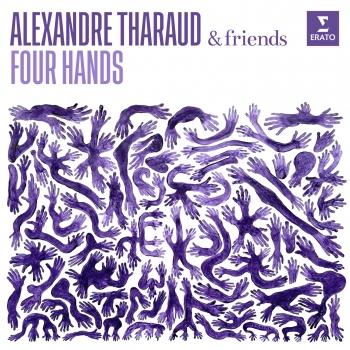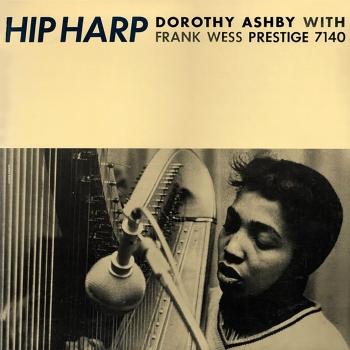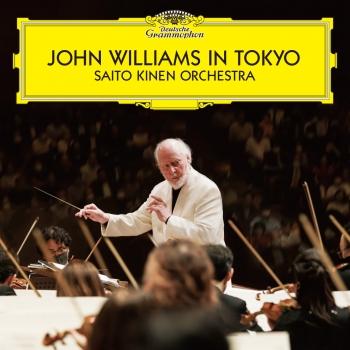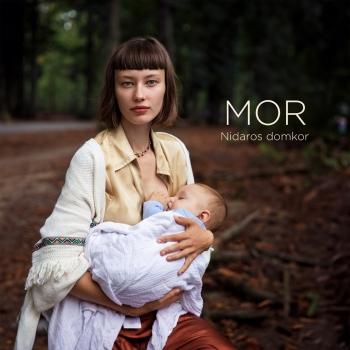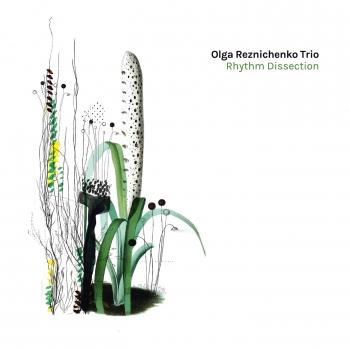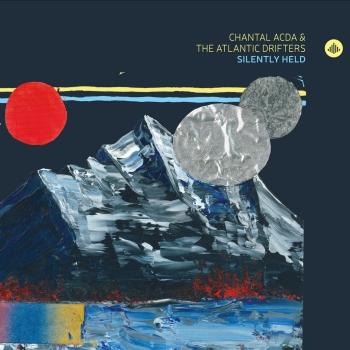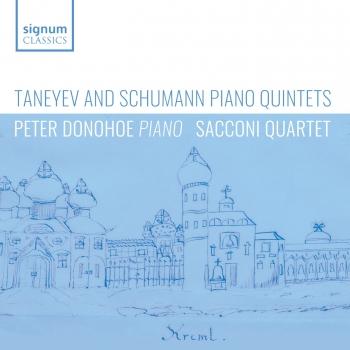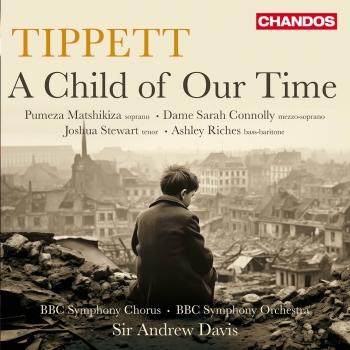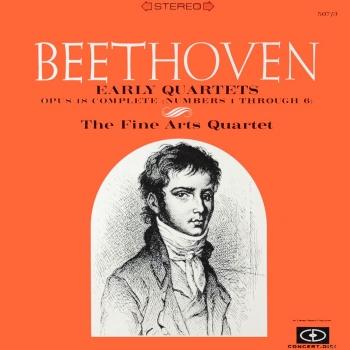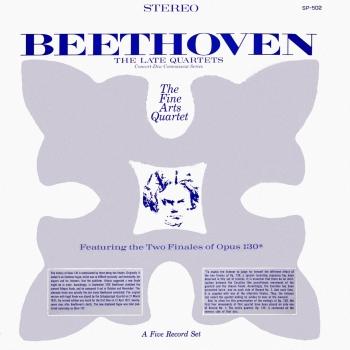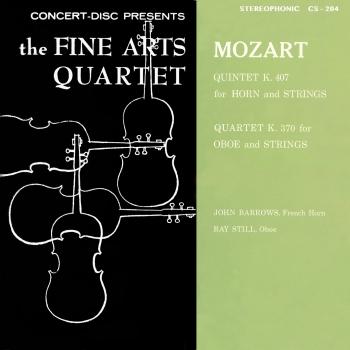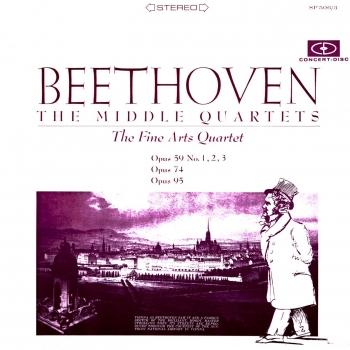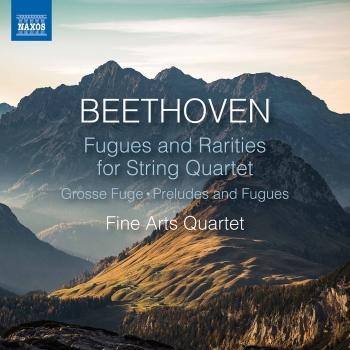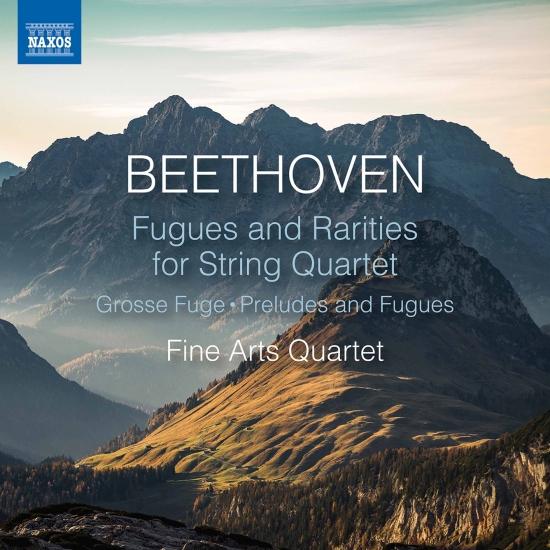
Beethoven: Works for String Quartet Fine Arts Quartet
Album info
Album-Release:
2020
HRA-Release:
24.01.2020
Label: Naxos
Genre: Classical
Subgenre: Chamber Music
Artist: Fine Arts Quartet
Composer: Ludwig van Beethoven (1770–1827)
Album including Album cover Booklet (PDF)
- Ludwig van Beethoven (1770 - 1827): String Quartet in F Major, Hess 32:
- 1String Quartet in F Major, Hess 32: I. Allegro con brio10:19
- 2String Quartet in F Major, Hess 32: II. Adagio molto09:32
- 3String Quartet in F Major, Hess 32: III. Scherzo. Allegro03:46
- 4String Quartet in F Major, Hess 32: IV. Allegretto06:46
- String Quartet No. 14 in C-Sharp Minor, Op. 131:
- 5String Quartet No. 14 in C-Sharp Minor, Op. 131: I. Adagio ma non troppo e molto espressivo06:04
- Ludwig van Beethoven:
- 6Prelude & Fugue in F Major, Hess 3006:28
- 7Allegretto in B Minor, WoO 21000:34
- 8Prelude & Fugue in C Major, Hess 3104:44
- 9Fugue in D Minor, Hess 245 (Fragment)00:40
- 10Fugue for String Quartet, Hess 36 (After Handel's HWV 67)02:11
- 11Minuet for String Quartet in A-Flat Major, WoO 209, Hess 3302:05
- 12Große Fuge in B-Flat Major, Op. 13316:42
Info for Beethoven: Works for String Quartet
The string quartets of Beethoven are among the greatest works of their kind, but he composed other works for quartet which have been neglected. This album is dedicated to these intriguing rarities. Alongside the wild and monumental Grosse Fuge, in many ways the culmination of Beethoven’s achievements in the string quartet genre, this recording further displays his mastery of counterpoint by bringing to light brilliant yet forgotten original versions of his quartets Op. 18, No. 1 and Op. 131, plus six virtually unknown miniatures, including his Preludes and Fugues.
The Fine Arts Quartet
The Fine Arts Quartet
was founded in 1946, although the group's members had actually begun working together as early as 1939 while playing in the Chicago Symphony Orchestra. The Quartet's first performance took place in 1940 with Leonard Sorkin, first violinist, Ben Senescu, second violinist, Sheppard Lehnhoff, violist, and George Sopkin, cellist. Military service in World War II intervened, however, and it was not until 1946, now with the new second violinist Joseph Stepansky, that the Quartet began to rehearse and perform regularly. The complete membership history of the Fine Arts Quartet, from 1946 to the present.
The Quartet performed on the ABC Radio Network's Sunday morning broadcasts from 1946 until 1954, and by the mid-fifties, was already considered one of America's finest quartets. There was an appearance on the Ed Sullivan Show, frequent performances on the Today Show, and starting in 1958, the Quartet began to tour Europe annually. In 1961, the Quartet toured Australia, and in the late sixties, the U.S. Department of State sponsored the Quartet's tours to Japan, Korea, Taiwan, Thailand, Australia and New Zealand. By the late seventies, the Quartet had already performed in some 270 cities in 28 countries. The Quartet continued to broadcast for radio in America (especially for WFMT-Chicago), in Europe (e.g. the BBC), and for television (concerts and educational programs for National Public Television).
The Quartet was also extremely busy recording, releasing an astonishing quantity of works (over 100) during its first 30 years of existence, including cycles of chamber music by Haydn, Mozart, Beethoven, Schubert, Mendelssohn, and Brahms, on such labels as Decca, Vox, Vanguard, and Concert Disc. But the Quartet was also appreciated for promoting contemporary music through performances, commissions, and recordings and played a major role in making composers such as Bartók, Shostakovich, Bloch, Babbitt, Wuorinen, Shifrin, Crawford-Seeger, Johnston, Husa, better known and accessible to the public.
During its early history, the Quartet had an impressive list of firsts to its credit. The Quartet gave the American premiere performance of the Shostakovich Quartet No.3 and was the first to record that quartet for radio and 78 rpm discs (with Mitch Miller as producer). It released the first complete stereo recording of the Bartók quartets, the first American recordings of the complete Beethoven quartet cycle, and the first stereo tape recordings (Dvorak and Debussy quartets). It recorded the first quartet series on educational television and the first educational film for the Encyclopedia Brittanica. Finally, it was the first quartet to appear on the Today Show, and to accompany a ballet (American Ballet Theater in New York).
The Quartet's first teaching residency, 1952-1955, was at Northwestern University. In 1963, after many years of summer concerts at the University of Wisconsin in Milwaukee, the Quartet was invited to become Quartet-in-Residence, and has been resident there ever since.
The Fine Arts Quartet
was founded in 1946, although the group's members had actually begun working together as early as 1939 while playing in the Chicago Symphony Orchestra. The Quartet's first performance took place in 1940 with Leonard Sorkin, first violinist, Ben Senescu, second violinist, Sheppard Lehnhoff, violist, and George Sopkin, cellist. Military service in World War II intervened, however, and it was not until 1946, now with the new second violinist Joseph Stepansky, that the Quartet began to rehearse and perform regularly. The complete membership history of the Fine Arts Quartet, from 1946 to the present.
The Quartet performed on the ABC Radio Network's Sunday morning broadcasts from 1946 until 1954, and by the mid-fifties, was already considered one of America's finest quartets. There was an appearance on the Ed Sullivan Show, frequent performances on the Today Show, and starting in 1958, the Quartet began to tour Europe annually. In 1961, the Quartet toured Australia, and in the late sixties, the U.S. Department of State sponsored the Quartet's tours to Japan, Korea, Taiwan, Thailand, Australia and New Zealand. By the late seventies, the Quartet had already performed in some 270 cities in 28 countries. The Quartet continued to broadcast for radio in America (especially for WFMT-Chicago), in Europe (e.g. the BBC), and for television (concerts and educational programs for National Public Television).
The Quartet was also extremely busy recording, releasing an astonishing quantity of works (over 100) during its first 30 years of existence, including cycles of chamber music by Haydn, Mozart, Beethoven, Schubert, Mendelssohn, and Brahms, on such labels as Decca, Vox, Vanguard, and Concert Disc. But the Quartet was also appreciated for promoting contemporary music through performances, commissions, and recordings and played a major role in making composers such as Bartók, Shostakovich, Bloch, Babbitt, Wuorinen, Shifrin, Crawford-Seeger, Johnston, Husa, better known and accessible to the public.
During its early history, the Quartet had an impressive list of firsts to its credit. The Quartet gave the American premiere performance of the Shostakovich Quartet No.3 and was the first to record that quartet for radio and 78 rpm discs (with Mitch Miller as producer). It released the first complete stereo recording of the Bartók quartets, the first American recordings of the complete Beethoven quartet cycle, and the first stereo tape recordings (Dvorak and Debussy quartets). It recorded the first quartet series on educational television and the first educational film for the Encyclopedia Brittanica. Finally, it was the first quartet to appear on the Today Show, and to accompany a ballet (American Ballet Theater in New York).
The Quartet's first teaching residency, 1952-1955, was at Northwestern University. In 1963, after many years of summer concerts at the University of Wisconsin in Milwaukee, the Quartet was invited to become Quartet-in-Residence, and has been resident there ever since.

